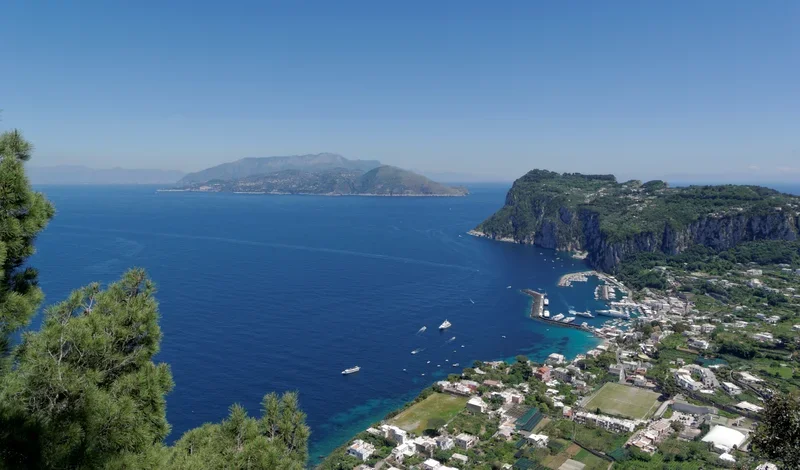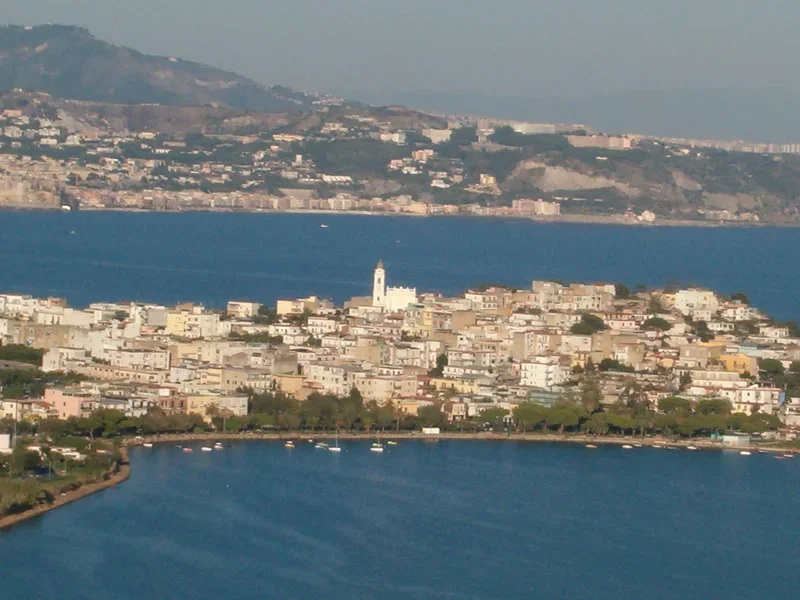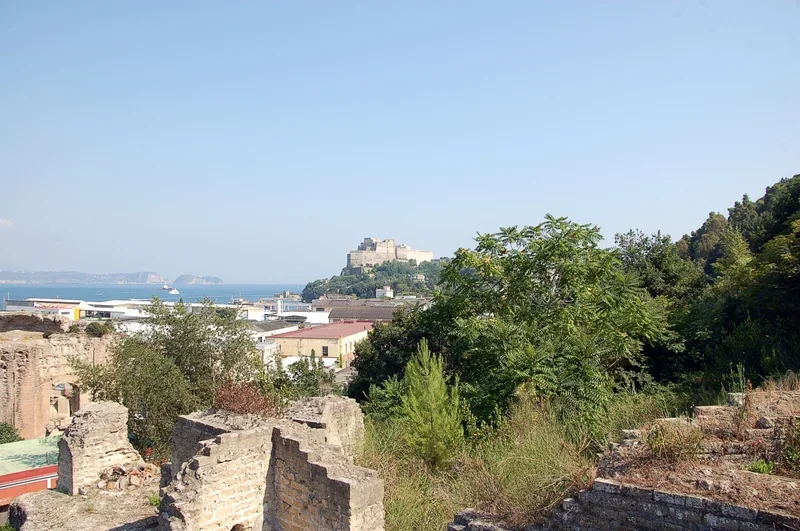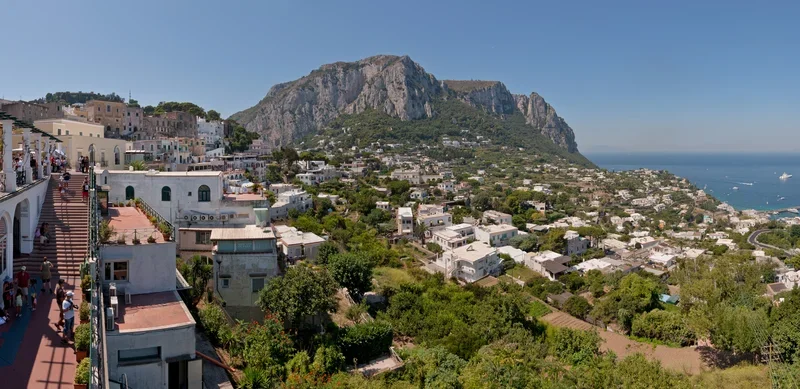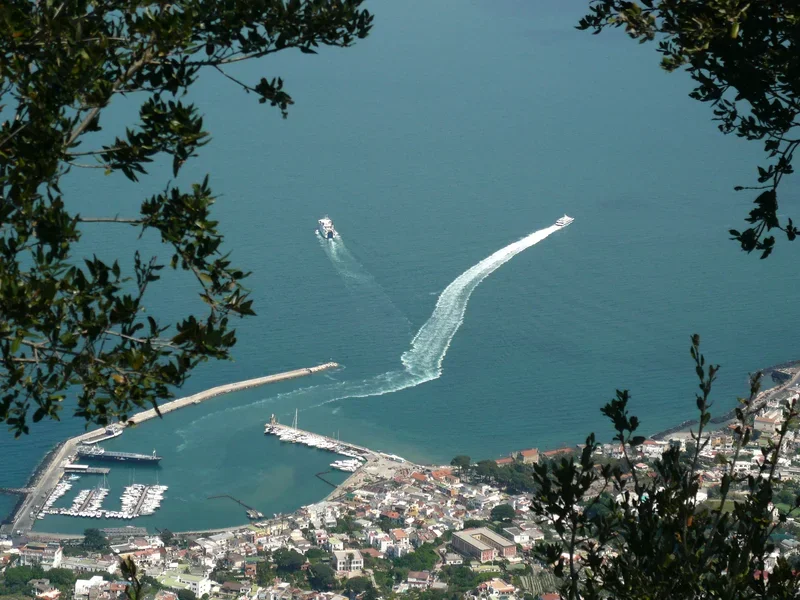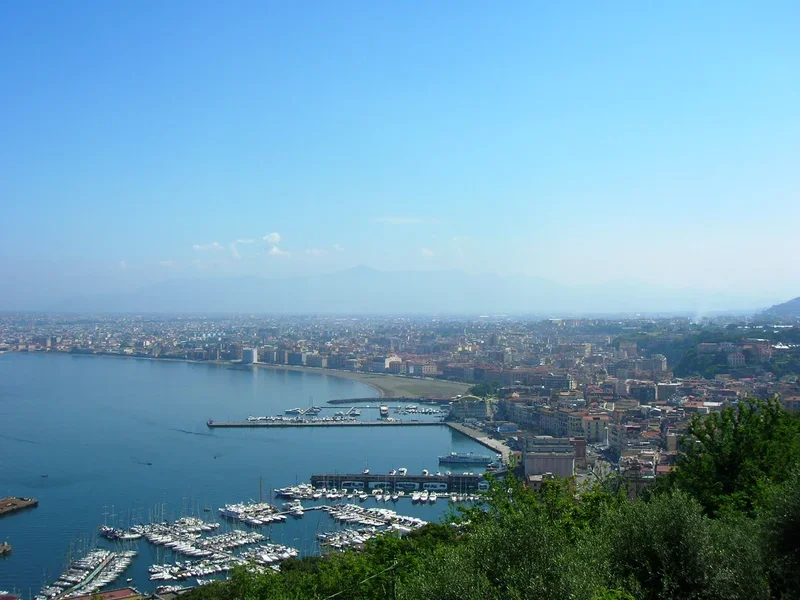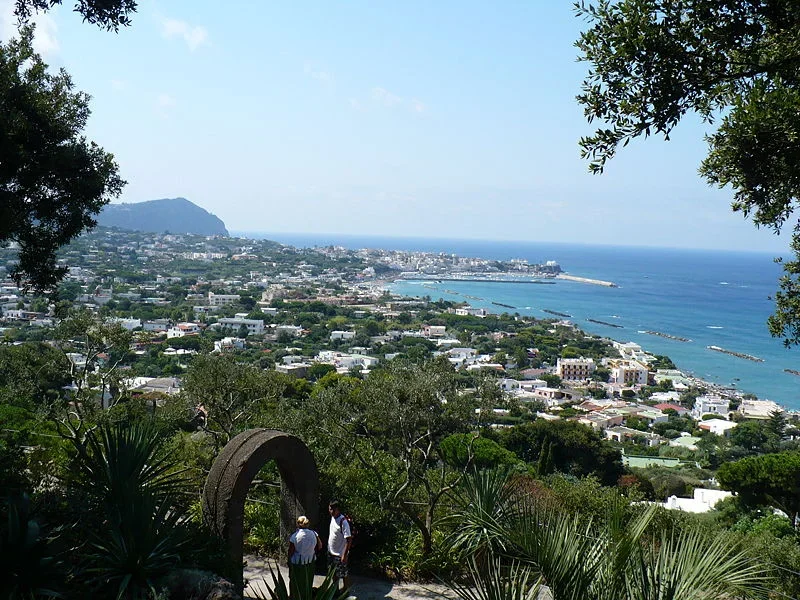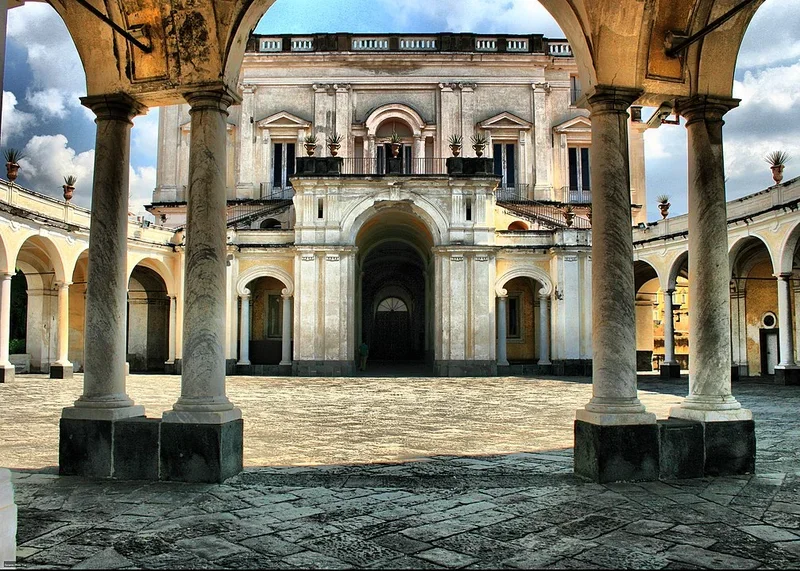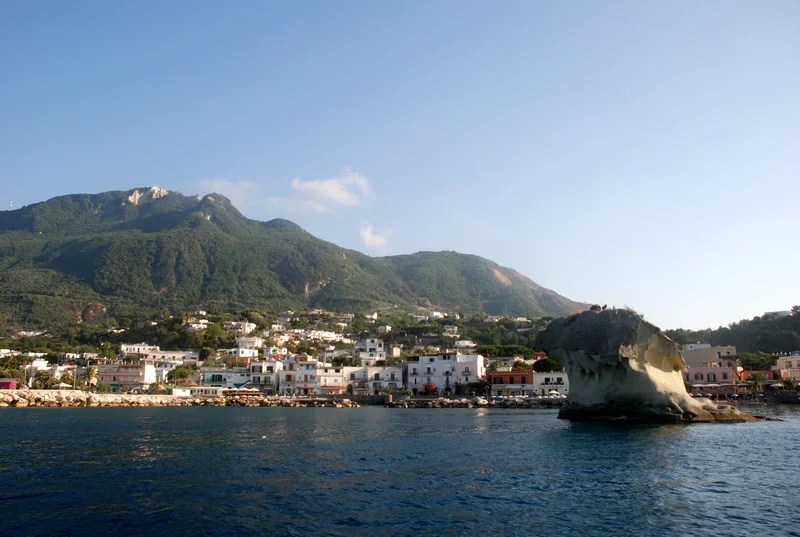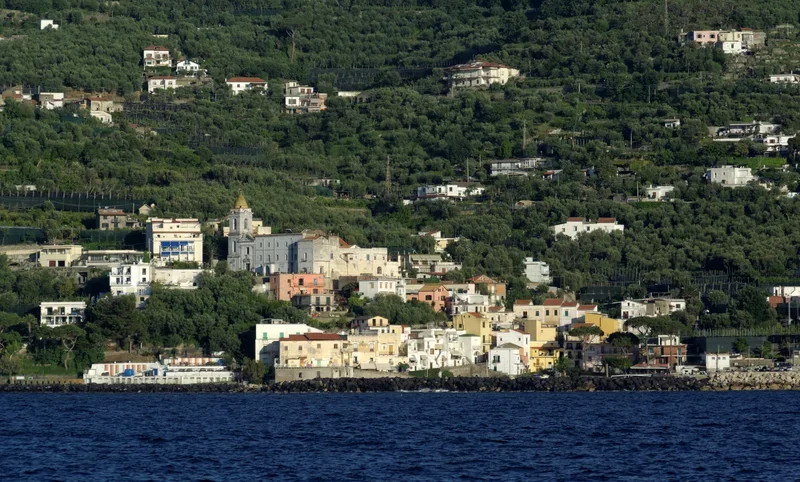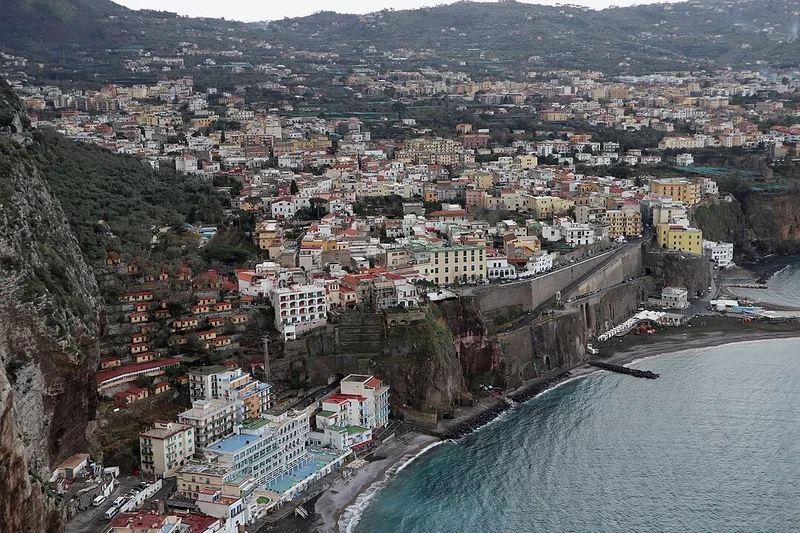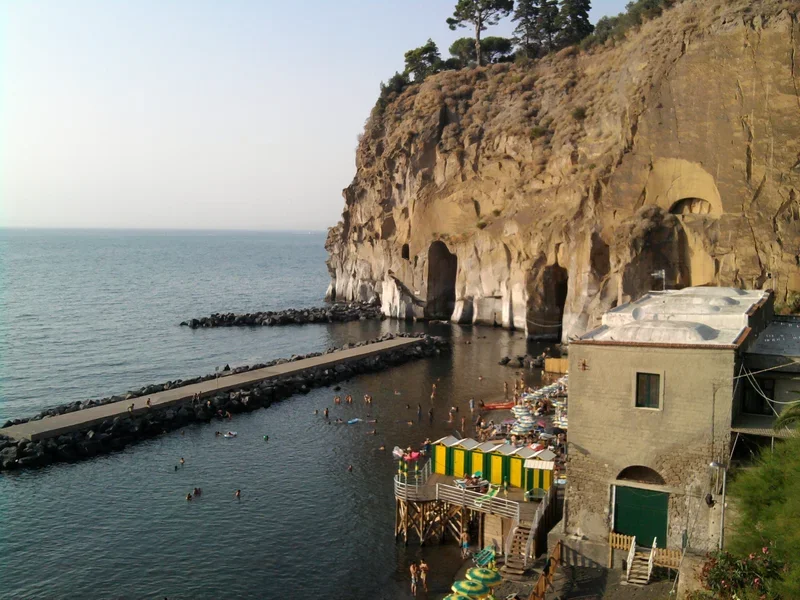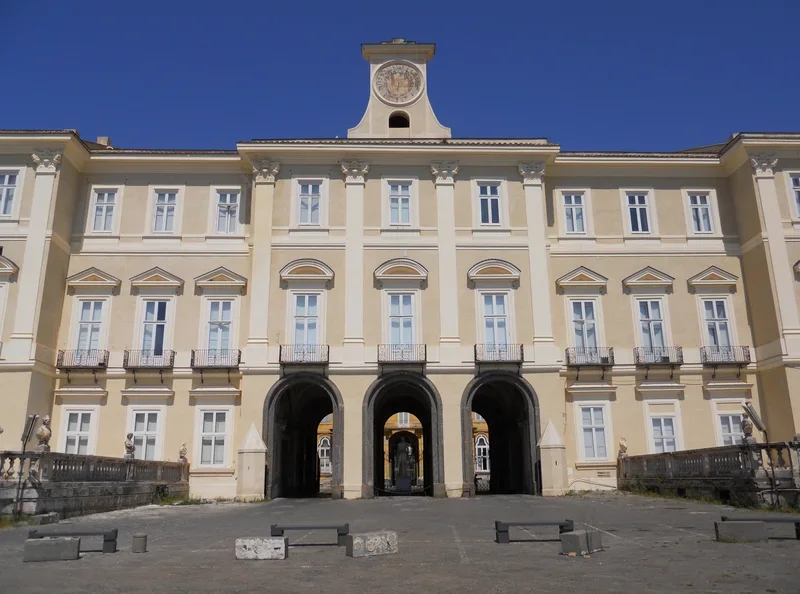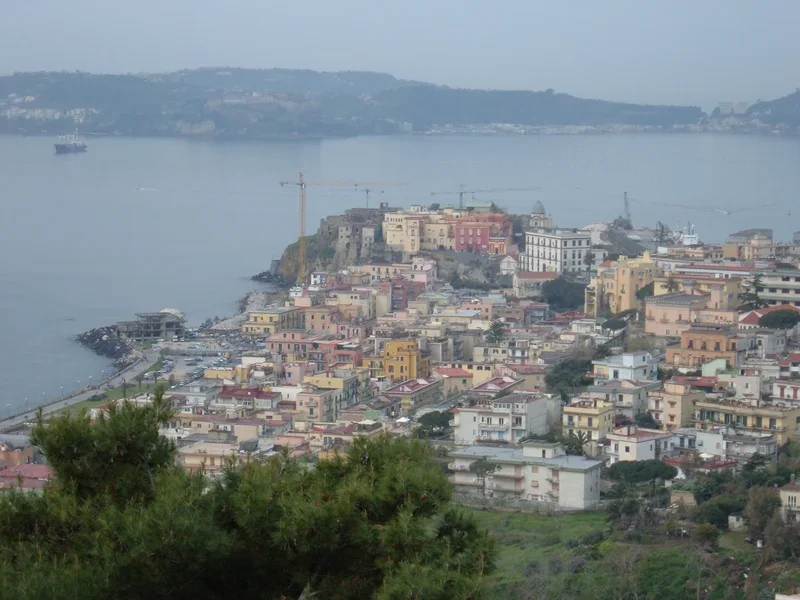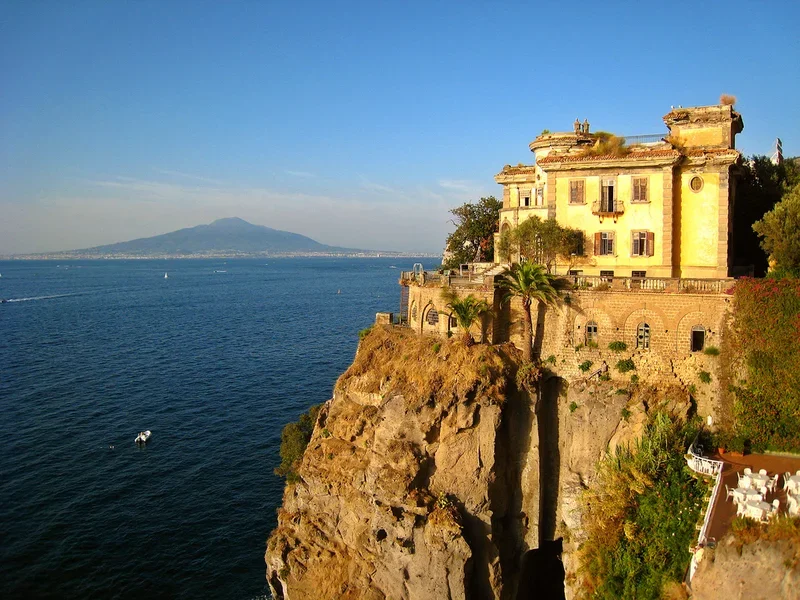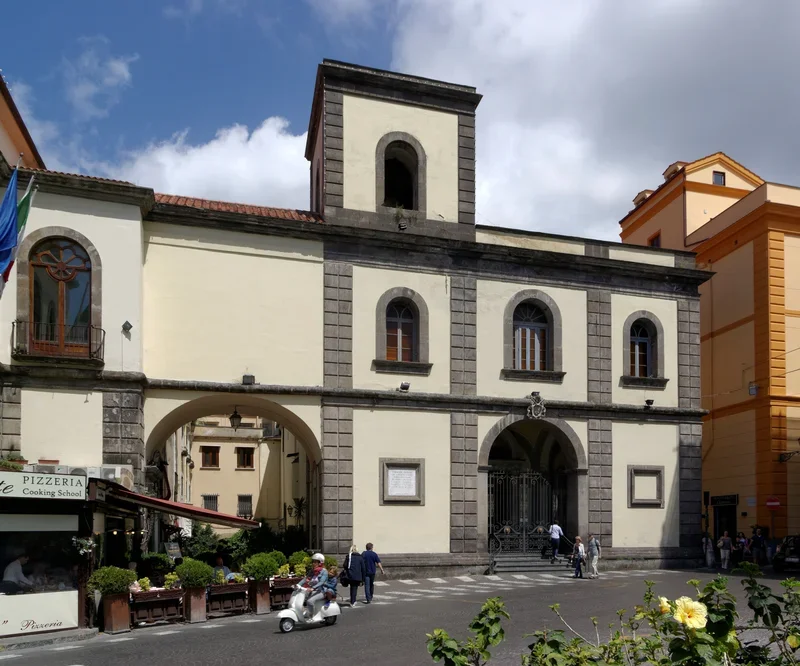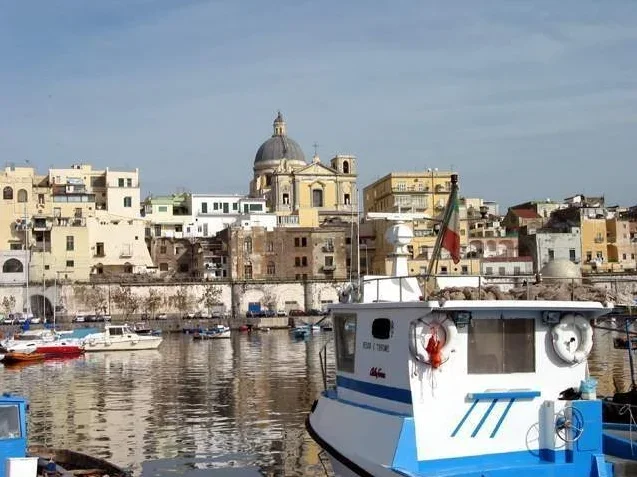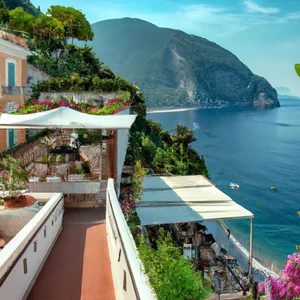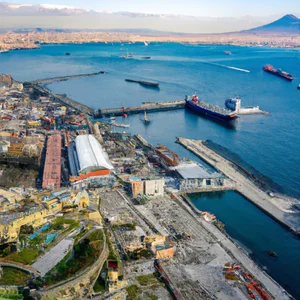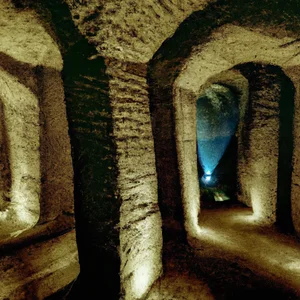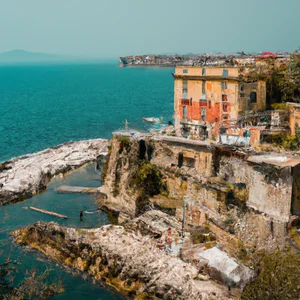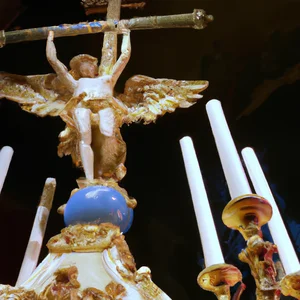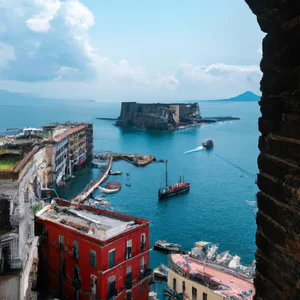Book your experience
Male Angevin
The Maschio Angioino, also known as Castel Nuovo, is one of the most emblematic symbols of Naples and an icon of its rich history. Located in the heart of the city, this imposing castle overlooking the sea has seen the passing of centuries and a succession of historical events that have marked its importance. Its construction, begun in 1279 at the behest of King Charles I of Anjou, represents not only an architectural work of extraordinary beauty, but also a cultural and social point of reference for the city and for the entire Kingdom of Naples.In this article, we will explore the Maschio Angioino through ten fundamental points that outline its history, architecture and functions over the centuries. We will start with a dive into the past, analyzing the historical events that led to its creation and its evolution over time. The magnificence of the castle is not limited to its structure: we will also immerse ourselves in the design and architectural details that make it unique.A visit to the Maschio Angioino is an experience that goes far beyond the simple exploration of a monument; offers the opportunity to discover fascinating rooms, participate in events and temporary exhibitions, and enjoy local delicacies in the restaurants and cafes in the immediate vicinity. Furthermore, we will provide useful information on how to get to the castle, opening hours, ticket costs and curiosities that make this an unmissable destination for those visiting Naples. Finally, we will explore the activities and guided tours available, to ensure that every visitor can fully appreciate the magic of the Maschio Angioino. Get ready to discover one of the most fascinating treasures of Naples, a place where history, culture and beauty intertwine in a timeless embrace.
History of the Maschio Angioino
The Maschio Angioino, also known as Castel Nuovo, is one of the most representative symbols of Naples and its history. Its construction began in 1279 at the behest of King Charles I of Anjou, from whom it takes its name. The castle was designed by the architect Giovanni di Chiaramonte and its construction ended in 1282.
The origins and construction
The Maschio Angioino was built in a period of great expansion for Naples, which at the time was an important political and cultural center. Its strategic position, overlooking the sea, made it a fundamental point of reference for the defense of the city. Over the centuries, the castle has undergone numerous restoration and expansion interventions, especially during the Aragonese period, when, under the reign of Alfonso I of Aragon, elements of great artistic and architectural value were added.
Significant historical events
The Maschio Angioino hosted historical events of great importance, including the oath of allegiance of King Alfonso I of Aragon and the famous coronation of Ferdinand I of Aragon >. Furthermore, the castle witnessed dramatic episodes, such as the siege by Charles V in 1535.
A symbol of Naples
Over the centuries, the Maschio Angioino has become a symbol of the city of Naples, representing not only its military history, but also its cultural transformations. Today, the castle is an important place of tourist interest and a monument that continues to tell the rich and varied history of the city.
Architecture and Design of the Maschio Angioino
The Maschio Angioino, also known as the Castle of Naples, is one of the most significant architectural symbols of the city. Its construction began in 1279 at the behest of Charles I of Anjou and lasted for several decades, reflecting the various stylistic influences that have followed one another over the centuries.
Architectural Style
The castle features a Gothic design with elements of medieval architecture, characterized by imposing towers and sturdy walls. The four corner towers, tall and majestic, give the Maschio Angioino an unmistakable silhouette. Each tower was equipped with battlements, which not only had a defensive function, but also contributed to the general aesthetics of the castle.
Renovations and Modifications
Over the centuries, the castle has undergone numerous renovations. Under Aragonese domination, for example, significant changes were made, including the construction of the chapel of San Bartolomeo and the addition of Renaissance decorations. These changes have blended architectural styles, creating an eclectic mix that represents the rich history of Naples.
Internal Elements
Inside the castle, it is possible to admire frescoes and artistic decorations that tell stories of past eras. The Sala dei Baroni, one of the most important rooms, is famous for its size and its frescoes, which reflect the power and grandeur of the Neapolitan nobility.
Use of Materials
The Maschio Angioino is built mainly in tuff, a local volcanic stone, which gives the castle an imposing and lasting appearance. The choice of materials was fundamental not only for the solidity of the structure, but also for its inclusion in the urban context of Naples.
In summary, the architecture and design of the Maschio Angioino not only reflect medieval and Renaissance construction techniques, but also tell the story of a period of great importance for Naples and for the whole of Italy.
Functions over the centuries
The Maschio Angioino, also known as the Castle of Naples, has had various functions throughout its long history, which dates back to the 13th century. Initially built as a royal residence for Charles I of Anjou, the castle played a vital role as a symbol of power and authority in medieval Naples.
Royal Residence
During the Angevin period, the Maschio Angioino was mainly a residence for the royal family. Official ceremonies, diplomatic meetings and court events took place here. Its strategic position on the coast also allowed easy access to the sea, facilitating trade and supplies.
Fortification and Defense
As the centuries passed, the castle also took on a military function. During invasions and wars, the Maschio Angioino was used as a fortress to defend the city from enemy attacks. Its imposing walls and towers represented a barrier against the conquerors, ensuring safety for the citizens of Naples.
Prison and Place of Detention
Over time, the Maschio Angioino was also used as a prison. Famous prisoners have been held in its cells, including the poet Torquato Tasso in the 16th century. This feature helped create an aura of mystery and charm around the castle.
Cultural and Museum Center
Today, the Maschio Angioino is an important cultural center and museum. In addition to hosting events and exhibitions, the castle is open to visitors who can explore its history through museum tours and educational activities. This aspect has made the Maschio Angioino a place of significant tourist interest for those visiting Naples.
In summary, the functions of the Maschio Angioino have evolved over time, reflecting the political, social and cultural changes of the city. From royal residence to fortress, prison and today cultural center, the castle continues to be a symbol of the history and identity of Naples.
Visit to the Castle: Times and Tickets
The Maschio Angioino, one of the most representative symbols of Naples, is open to the public for tourist visits. Opening hours may vary depending on the season and holidays, so it is always advisable to check the official website or contact the ticket office before planning your visit.
Opening Hours
In general, the castle is open at the following times:
- Monday to Friday: 9:00 - 19:30
- Saturday and Sunday: 9:00 - 20:00
Please note that the last entry is permitted one hour before closing.
Tickets
The cost of the ticket for entry to the Maschio Angioino varies depending on the categories of visitors:
- Full price ticket: €10
- Reduced ticket (for young people between 18 and 25): €5
- Free entry: for children under 12 years of age, disabled people and carers, as well as for some specific categories such as teachers and journalists.
You can purchase tickets directly at the castle ticket office or online to avoid long waits.
Guided Tours
The Maschio Angioino also offers paid guided tours, which allow you to discover the history and architecture of the castle with an expert. These visits are available in several languages and can be booked in advance.
Additional Information
It is advisable to wear comfortable shoes, as the visit involves walking on historic floors and stairs. Furthermore, it is advisable to check for any extraordinary closures or special events that could influence opening hours.
Rooms and environments to explore
The Maschio Angioino, one of the most iconic symbols of Naples, offers visitors a series of rooms and environments rich in history and architectural charm. During your visit, you can explore different areas within the castle, each with its own uniqueness and historical importance.
The Hall of the Barons
The Barons’ Hall is one of the most impressive rooms in the castle. Characterized by a frescoed vaulted ceiling, this room was used for official events and noble receptions. The frescoes and wall decorations tell stories of past eras, making the atmosphere truly evocative.
The Chapel of Santa Barbara
Another room of great importance is the Chapel of Santa Barbara, dedicated to the patron saint of sailors. This sacred space features a beautifully decorated altar and a series of works of art that testify to the religious importance of the castle over the centuries.
The Internal Courtyard
The Internal Courtyard is a central place within the Maschio Angioino, where visitors can admire the majesty of the walls and towers that surround the area. This space is often used for cultural events and concerts, offering a unique experience in a historical context.
The Prisons
The Prisons of the castle offer a journey into the past, allowing you to discover the living conditions of medieval prisoners. These dark and narrow spaces tell stories of imprisonment and justice, creating a fascinating contrast with the other, more luxurious areas of the castle.
The Hall of Weapons
Finally, the Sala delle Armi displays a collection of armor and weapons that date back to different historical eras. This room is particularly interesting for military history enthusiasts and offers a glimpse into the war technologies of the past.
Exploring the rooms and environments of the Maschio Angioino means immersing yourself in centuries of history, art and culture, making the visit an unforgettable experience in Naples.
Events and temporary exhibitions
The Maschio Angioino, also known as the Castle of Naples, is not only an important tourist attraction, but also a lively cultural center that hosts events and temporary exhibitions of great importance.
Art exhibitions
The art exhibitions at Maschio Angioino are created in collaboration with local and international artists. These displays can range from contemporary works to historical pieces that highlight Naples’ rich artistic culture. Exhibitions are often curated in evocative spaces within the castle, creating a unique interaction between art and historic architecture.
Cultural events
The castle also hosts cultural events, such as concerts, theater performances and conferences. These events are designed to engage the public and celebrate Neapolitan history and culture. Events may include performances by local musicians, theatrical performances of classical and modern works, and meetings with historians and artists.
Seasonal activities
During local holidays and celebrations, the Maschio Angioino transforms into a stage for special events. For example, during the Christmas period, the castle can host Christmas markets and light shows, making the visiting experience even more fascinating. In summer, there may be outdoor events that take advantage of the castle’s outdoor spaces for concerts and festivals.
Practical information
To stay updated on scheduled exhibitions and events, it is advisable to visit the official Maschio Angioino website or follow the dedicated social pages. Furthermore, many events require advance booking, so it is advisable to plan your visit in advance.
Note: The program of events and exhibitions may vary, so it is always useful to check the latest information before planning a visit.
Restaurants and cafes near the Maschio Angevin
Maschio Angioino, located in the heart of Naples, is surrounded by a variety of restaurants and cafes offering a wide range of culinary options. Here are some of the most recommended places where you can taste typical Neapolitan dishes and relax after a visit to the castle.
Restaurants
Trattoria da Nennella: Located in the Quartieri Spagnoli, this trattoria is famous for its traditional Neapolitan cuisine and lively atmosphere. Recommended dishes include Genoese pasta and Neapolitan ragù.
Osteria da Carmela: A few steps from the castle, this osteria offers homemade dishes with fresh, local ingredients. Don’t miss their Neapolitan pizza, considered among the best in the city.
Coffee
Caffè Gambrinus: An icon of Naples, this historic café is the perfect place for a coffee break. Here you can enjoy an espresso or a sfogliatella, a typical Neapolitan dessert, in an elegant setting rich in history.
Caffè del Professore: This cafe is known for its cold coffee and its welcoming atmosphere. It’s a great place to relax and watch Neapolitan life go by.
Advice for visitors
It is advisable to book a table at peak times, especially on weekends, to avoid long waits. Furthermore, many restaurants offer dishes of the day which can represent an excellent opportunity to savor local specialties at affordable prices.
Finally, don’t forget to ask for any dishes of the day or regional specialties, so you can enjoy an authentic gastronomic experience during your visit to Maschio Angioino.
How to get to Maschio Angioino
The Maschio Angioino, located in the heart of Naples, is easily accessible thanks to its central location and the various means of transport available.
By car
If you decide to arrive by car, you can use the paid car parks nearby. Please note that traffic in the center of Naples can be heavy, so it is advisable to plan your trip well in advance.
By public transport
Naples’ public transport network is well developed and offers several options for getting to the castle:
- Metro: The closest stop is “Università” on line 1, which is only a few minutes walk from the castle.
- Bus: Several bus lines stop in the immediate vicinity. Check the lines serving Piazza Municipio.
- Tram: Tram line 1 has a stop located a few steps from the Maschio Angioino.
On foot
If you are already in the center of Naples, reaching the Maschio Angioino on foot is a pleasant choice. The surrounding area is full of shops, cafes and other points of interest, making the walk an ideal option for exploring the city.
By taxi or ridesharing
You can also opt for a taxi or ridesharing service like Uber. This is especially convenient if you have luggage or are traveling with a group of people.
In summary, whether you choose to arrive by car, public transport or on foot, the Maschio Angioino is easily accessible and well connected to the rest of the city, allowing you to start your visit without difficulty.
Curiosities and legends
The Maschio Angioino, also known as Castel Nuovo, is surrounded by a series of curiosities and legends that enrich its history and charm. Here are some of the most interesting:
The legend of Virgil
One of the most fascinating legends linked to the castle concerns the famous poet Virgil, who is said to have buried a magical treasure under its foundations. It is said that whoever manages to find it can obtain extraordinary powers. This legend has fueled the imagination of many visitors over the centuries.
The ghost of Isabella of Castile
Some say that the ghost of Isabella of Castile, who stayed in the castle during a visit to Naples, still wanders among its rooms. Its presence has been felt by several custodians and visitors, who claim to have heard strange noises and seen mysterious apparitions.
The treasure of the Templars
Another legend has it that the Templars hid a treasure inside the Maschio Angioino. This story has attracted many treasure seekers over the years, making the castle a place of adventure and mystery.
The meaning of the name
The name “Maschio Angioino” derives from the Angevin dynasty, which ruled Naples in the 13th century. “Male” indicates the main and fortified part of the castle, a symbol of power and protection. This etymology underlines the historical and political importance of the castle.
Artistic representations
The Maschio Angioino has often been represented in works of art and literature. Its majestic structure has inspired numerous artists, poets and writers, becoming an iconic symbol of the city of Naples. The artistic representations of the castle have contributed to spreading its fame and beauty over the centuries.
These curiosities and legends add a further layer of charm to the Maschio Angioino, making the visit not only a historical experience, but also a journey into the mythology and popular culture of Naples.
Activities and guided tours at Maschio Angioino
The Maschio Angioino, one of the symbols of Naples, offers a variety of activities and guided tours for visitors who wish to explore its history and architecture in depth.
Guided tours
Numerous tourist agencies organize guided tours of the castle, which generally include:
- Visits with expert guides who tell the history of the castle and its inhabitants.
- Access to areas not always open to the public, such as towers and walls.
- Thematic visits, for example on court life or on the art and architecture of the Maschio Angioino.
Special activities
In addition to the standard tours, the castle also hosts special activities such as:
- Educational workshops for children and teenagers, to introduce them to history in an interactive way.
- Night visits, which offer a suggestive and unique atmosphere, with stories and legends linked to the castle.
Cultural events
The Maschio Angioino is often home to cultural events such as concerts, theatrical performances and book presentations, making it a lively and dynamic place in the heart of Naples. These events can be an interesting part of the visit, offering a broader cultural experience.
Useful information
It is advisable to book guided tours in advance, especially during the high tourist season. Many tours can be booked online, and discounts are often available for groups and families.
Visit the official Maschio Angioino website for further details on activities and guided tours available during your visit.

